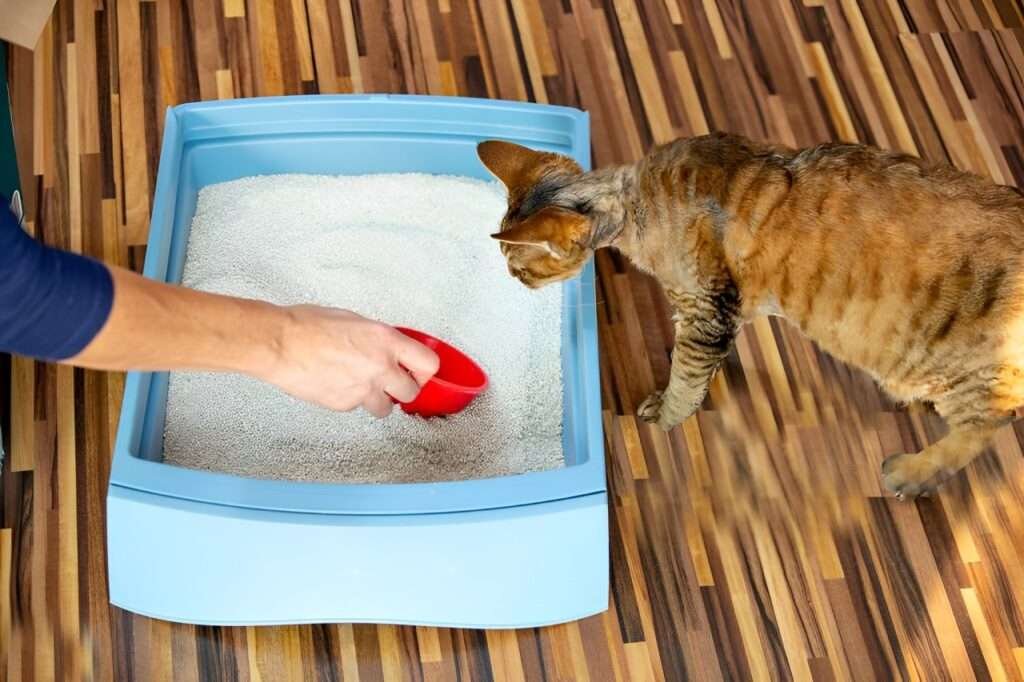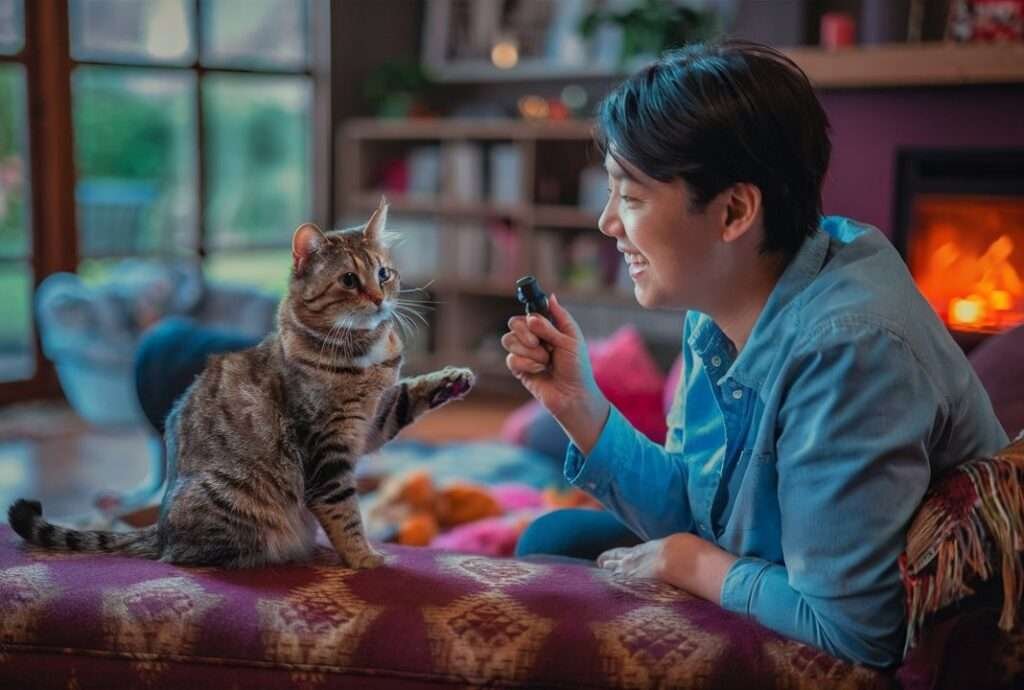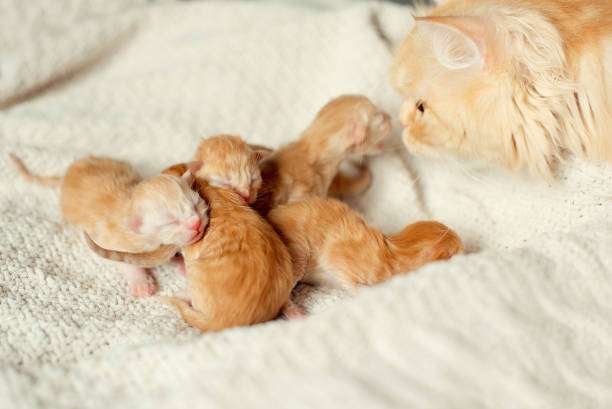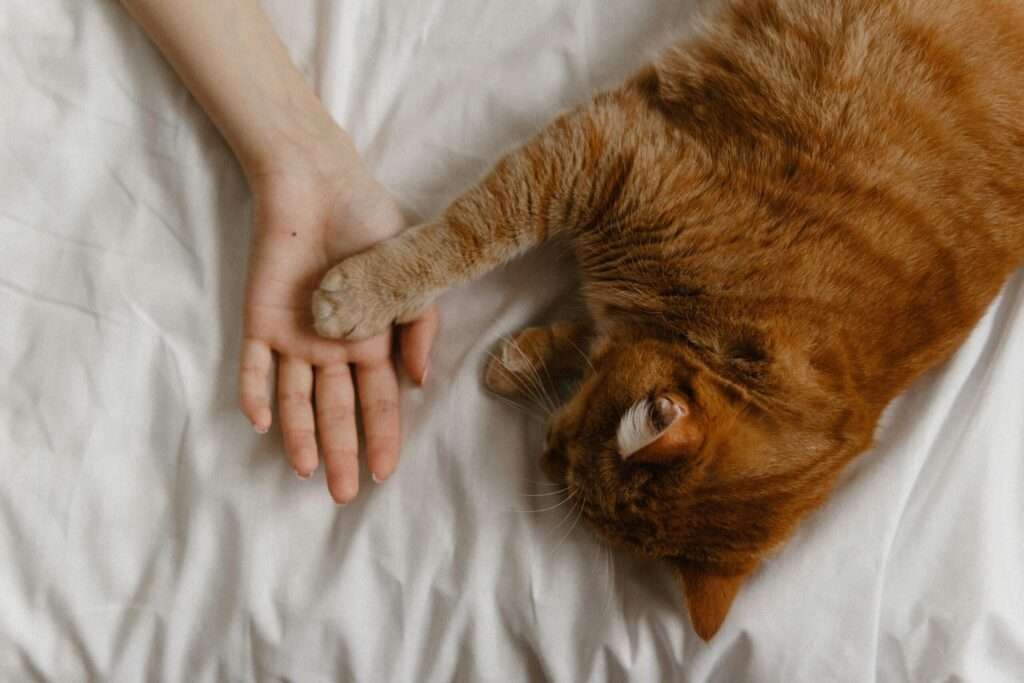Cat training is very important for cat owners to improve their pets’ behavior. Through this, we can make them disciplined. By training them, they can do tricks and understand our commands. I had no idea how to train a cat when I got my first one. So, these tips and tricks will be helpful for you if you are a new cat owner, and you can learn the basics of petting a cat.
Table of Contents
ToggleStock up on treats
For starters, cats need motivation. Unlike dogs, cats won’t be as excited and eager to learn unless their rewards are worth their while. To make the most of your training sessions, be sure to stock up on their favorite treats and delicious cat food.
Find the best time
Cats’ daily lives follow a predictable cycle of hunting (playing), eating, grooming, and sleeping, so you’ll want to fit training sessions into their routine. Try training your cat right after they wake up from their nap as they’ll be ready to play and more likely to focus. They’ll also probably be hungry, which means they’ll work extra hard for those tasty treats.
Keep training sessions brief
Cats have short attention spans. A training session under 15 minutes is long enough to accomplish the goal but short enough to keep your cat focused. Remember: the goal should be progress, not perfection!
Eliminate distractions
A distracted cat can’t focus. Find a quiet place away from any pets and members of the family for your training session. Any background noise can throw your cat off, making the training session unproductive.
Be consistent with cues
To avoid confusion, use the same signals (could be hand signals) or cues for the command you want to achieve. Making sure family members also know the right signals and cues will help maintain consistency.
Only train one skill at a time
Trying to teach a cat multiple skills at once can overload them. Only after your cat masters one skill should you move on to the next.
Repeat, repeat, repeat
Repetition reinforces your cat’s behavior. Once your cat masters the skill, make sure you repeat it frequently outside of a training session so your cat doesn’t forget it.
Use positive reinforcement
Focus on the behavior you want your cat to continue rather than the behavior you want them to stop. Yelling, swatting, or spraying your cat for unwanted behavior won’t be productive and your cat will likely just avoid you.
Be patient
Learning new behaviors or solving behavior problems takes time. Be patient with your cat while it’s learning a new skill – they’re more than capable and very intelligent.

Litter training
Many kittens and cats come already trained to use the litter box. However, even if yours didn’t, you can litter train them fairly quickly. Make sure the box is clean and in a quiet place. After your kitty eats, move them to the litter box and gently scratch the litter with one of their front paws. After they pee or poop, reward them and remove them from the box. Do this consistently, and they will soon figure out the litter box is their elimination area.
Clicker training
Clicker training is a very effective cat training method. All you need is a tool that makes a gentle clicking sound like a training clicker, a pen, or even your tongue! The goal is to first associate the clicking sound with a reward, and then further associate a new skill or desired behavior with the click, so your cat knows they’ll be rewarded, creating a cycle of reinforcement.
Hand signals
Using hand signals is another great way to train your cat. The key is to associate different commands with hand gestures. For example, making a fist when you want your cat to sit or making an open palm when you want them to give you a high five can help strengthen behaviors.
Voice cues
Voice cues are saying certain words to indicate certain commands. Similar to hand signals, the key is to associate a word with a behavior and reward your cat when it’s done. For example, saying “sit” to get them to sit or saying their name to get them to walk to you.
Carrier training
Carrier training can teach cats that the carrier is a safe place to be, thus, making traveling with your cat easier. First, leave the carrier door open and put a favorite toy or a treat inside it. When your cat enters the crate, give them some positive reinforcement like a pet or a chin-scratch. Once your cat is comfortable, try closing the door. Start with just a few seconds and slowly build up as your cat gets more comfortable with the door being closed. After your cat adapts to the door being closed, get them used to the crate being carried. Start by lifting it up and placing it back down, and slowly start taking steps. Do this enough and your cat will soon be comfortable when it’s time to travel or visit the vet.

Dealing with Mischievous Cat Behavior
Mischievous Behavior
When a cat exhibits mischievous behavior, it’s often a sign of boredom. For instance, a cat might chew on cords or get into other types of mischief. The solution is simple: play with your cat. Engaging them in active play can significantly reduce these behaviors. Age also plays a role, with kittens being particularly prone to such actions.
Nocturnal Zoomies
Zoomies, especially at night, are natural bursts of energy. This behavior happens when cats are not exercised. To manage this: Play with your cat during the day to expend their energy by taking them on a walk. I know your cat is very naughty and difficult to handle. For taking them on walks, you need to teach leash training and also you need some advice about cat harnesses. We have an article solving every problem, check this link: Regulate their schedule with consistent meal and play times. Meal time is a great time to train them. As they are hungry, they will be interested in playing and learning lessons for their treat. They can show their predatory skill to achieve their rewards. If you start teaching them after a meal, they’ll be like: “No, I am full, it’s time to rest.” Make sure you are encouraging them after every task with positive sounds and giving them delicious treats.
Cat heel attack
Heel attacks by cats, often referred to as play aggression, can be an unexpected and painful experience for cat owners. This essay explores the causes and solutions to this behavior, providing a comprehensive understanding of why cats bite heels and how to manage it.
Causes of heel attacks
Play aggression, commonly known as heel attack, occurs when a cat bites the heel of an unsuspecting human. Suppose someone is walking through the dining room, unaware that your cat is hiding under the tablecloth. Suddenly, the cat jumps out, bites your ankle, and engages all four paws in a kicking motion. This behavior is not malicious but an expression of the cat’s natural play patterns.
Reasons for play aggression
Cats exhibit play aggression because they don’t get enough constructive playtime. For cats, play equates to hunting. They mimic the behavior of prey during play, meaning that moving objects, such as human ankles, trigger their predatory instincts. When cats are bored and lack adequate interactive play, their energy goes into these sudden, aggressive play attacks. Your ankle becomes a prey option, like a squirrel, because of its mobility and accessibility.
Aggression game solutions
Addressing play aggression involves providing your cat with ample opportunities for interactive play. Engaging your cat with toys that mimic hunting movements can help redirect their energy in a positive way. It is important to play with your cat regularly so that they get the physical and mental stimulation they need. Again, the advice is clear: play with your cat. Without this energetic outlet, cats will inevitably resort to heel biting as a form of play.
Managing game aggression
To effectively manage this behavior, introduce interactive toys that encourage your cat to chase, poke, and hunt. These toys may include feather wands, laser pointers, and motorized toys that move randomly. Additionally, setting aside dedicated playtime each day helps satisfy your cat’s predatory instincts and reduces their tendency to attack heels. If heel biting continues despite these efforts, it may be necessary to consult a veterinarian or cat behaviorist for further guidance.

Plant Eating and Destruction by Cats
Eating and destroying plants is a common problem for many cat owners. Cats may chew on leaves, dig in the soil, or uproot plants, causing chaos and potential danger. This essay explores the causes and solutions to this behavior, providing insight into how to manage your cat’s destructive tendencies toward houseplants.
Causes of Plant Destruction
A good number of you have faced the problem of cats eating houseplants, destroying plants, and getting into the soil. This behavior can include eating leaves, digging up soil, and causing general havoc among your houseplants. Cats often exhibit this behavior out of curiosity, boredom, or an innate need to chew greens. A primary reason cats eat and destroy plants is their natural tendency to peck at leaves and grass. However, it is very important to be aware of what types of plants you have in your home. Many plants can be poisonous to cats, posing serious health risks. There is a long list of plants that are poisonous to cats, and you should make sure that your plants are safe for your feline friend. Be sure to refer to poisonous plant resources to avoid any accidental poisoning.
Solutions to Prevent Plant Destruction
To prevent your cat from engaging in plant destruction, several strategies can be employed. First, if possible, remove those plants from the ground. Hanging plants from the ceiling or placing them on high shelves can keep them out of reach. This physical barrier can be extremely effective in preventing access. Another method of deterring cats is to use lava rocks. Lava rocks are lightweight pebbles with sharp edges. Placing these rocks above ground on potted plants can make it uncomfortable for cats to dig or step on. This discomfort may discourage them from spending time around plants. In addition, products like sticky gloves can be useful. These products have a sticky surface that cats find unpleasant to touch. When they encounter this sticky surface, they may avoid the area in the future.
Provide Alternatives
It is essential to offer an alternative to the restrictions you place on your cat. In this case, providing them with something they can securely communicate with is crucial. Consider getting flat wheat grass, oat grass, or barley grass specifically for your cat. Growing a large flat of cat grass can provide your cat with a safe and enjoyable option that satisfies their need for green chewing.



